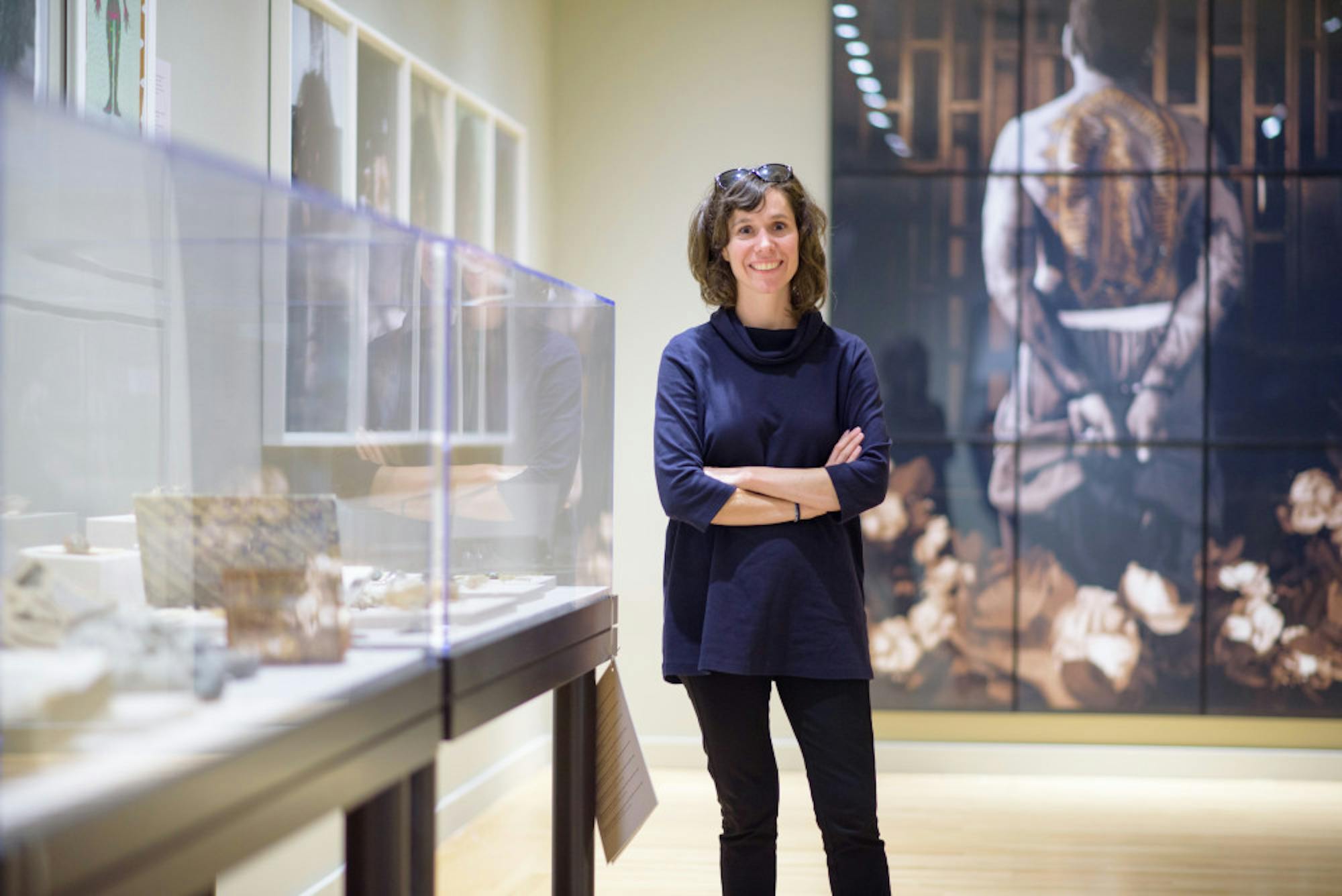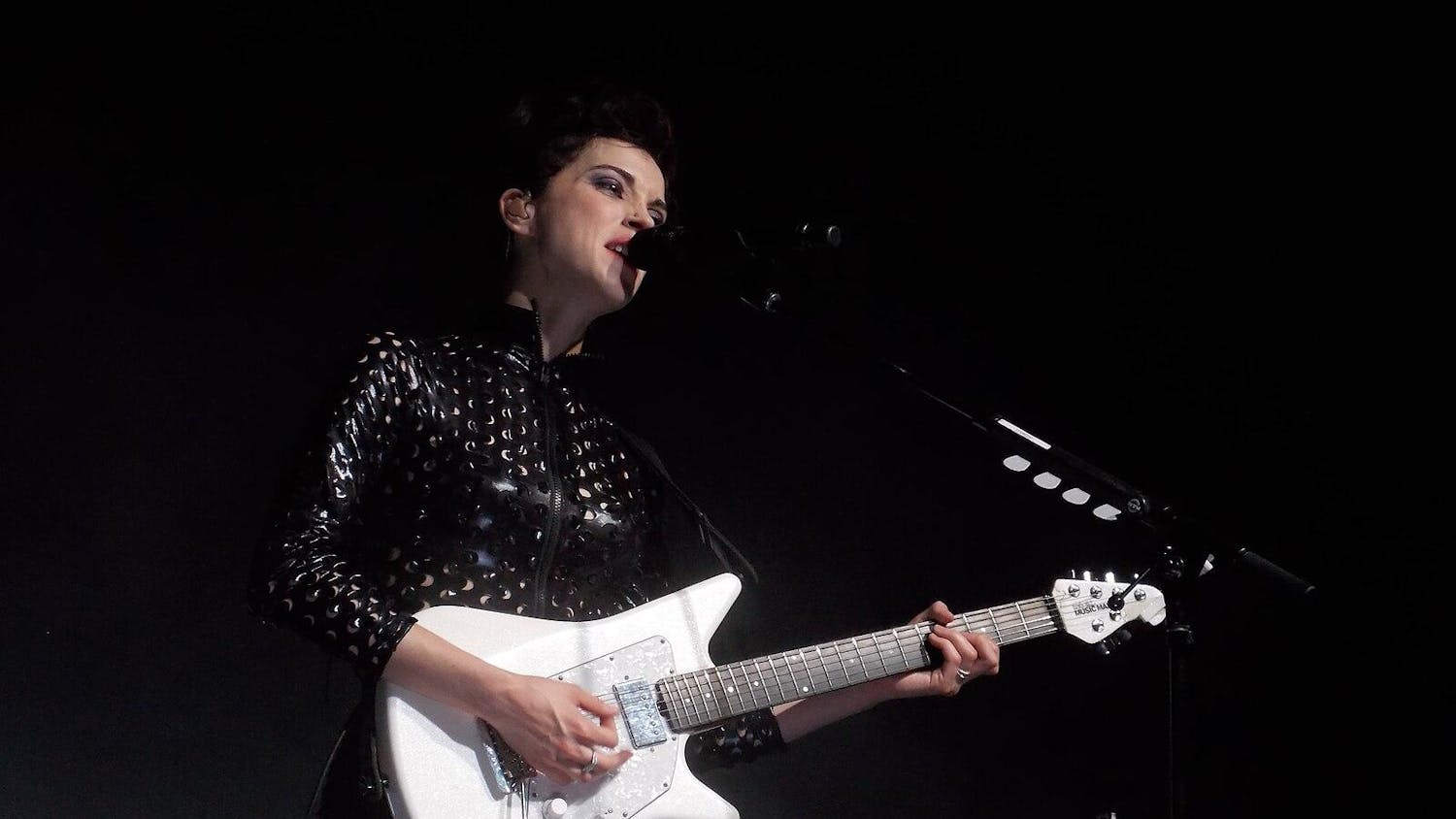Since Dina Deitsch took over as chief curator of the then-Tufts Art Gallery in July 2017, the gallery has changed immensely. Even the name of the institution, from the Tufts Art Gallery to the Tufts Art Galleries (TUAG), has been subject to change. TUAG are currently undergoing a total rebrand, both online and on paper. Deitsch sat down with the Daily to discuss the art galleries' past, present and future.
The biggest change during Deistch’s tenure as curator has been an infrastructural one, as the Tufts-School of the Museum of Fine Arts (SMFA) merger combined the art galleries of the two schools. Deitsch spoke about how she's kept on top of having galleries on multiple campuses.
“Our print calendar is [one of the] examples or physical manifestations of what we do and have," Deitsch said. "Either it’s a giant structural accordion shape, and on one side is what’s happening at the SMFA, and the other side of that is what’s on the Medford campus … We’ve rebranded, and we’ve built a new website that just went live. So we finally have a way for people to find what we are.”
The galleries have hosted two solo exhibitions: one featuring Harry Dodge at the Medford/Somerville campus and the other featuring Suara Welitoff at the SMFA gallery. In terms of which artists will be shown at TUAG, Deitsch discussed a few projects the galleries are currently working on.
“I think one of the things we’re working on is integrating ... our visiting artist program that we had at the art school and bringing artists here," she said. "So we had Harry [Dodge] come here and then do a big lecture over at the SMFA campus ... and he was in conversation with Amy Selman.”
Over the past year the galleries have also received the nationally acclaimed Andy Warhol grant, which goes toward a show that will be on display in January 2021. Deitsch elaborated further on the exhibition supported by the grant.
“[The grant is] for a project for our curator Abigail Satinsky, who’s based at the SMFA. She’s working on an exhibition for January 2021 about activism in the United States about Latin America in the 1980s," she said. "It’s art activism in the ‘80s in the U.S. that’s not AIDS related ... It’s sort of an untold art historical narrative that people don’t realize. So that’s a huge project and that will be traveling in a couple venues throughout the country. So that’ll be a big deal.”
In the meantime, the coming of summer means closing time for TUAG, as Deitsch and the other Galleries staff ramp up their leg work preparing for the coming seasons.
“We plan our exhibition program about two years in advance … so summertime is a great time to do research for our spring programs,” Deitsch said. “Our student graduate fellows … stay during the summer, doing a lot of helping research.”
The time is also used to explore ways to integrate the Galleries’ permanent collection.
“We have a new app for the Galleries called the Museum app,” Deitsch explained. “This summer you’ll be able to start downloading all public art; sculptures you’ll be able to read.”
The new app represents just one example of Deitsch’s focus on moving TUAG beyond traditional notions of art galleries as singular, closed spaces as well as emphasizing the importance of public art. TUAG will now also host a Public Art Committee, which Deitsch explained in further detail.
"Because of all the sort of conversations about representation on campus, the Gallery has been busy thinking about how [it] can better enliven our campuses with public art. We already started new initiatives on that with something called TuftsPUBLIC and [Artist] Response, which are temporary projects."
One upcoming exhibition, beginning in the fall, will meld this ambition with one of the contemporary world’s most visible humanitarian crises.
Part of a larger collective entitled “Walls Turned Sideways: Artists Confront the Justice System,” the exhibition will feature artist Jenny Polak.
“She’s been doing this project since the late 90s, where she’s created ICE escape signs,” Deitsch explained. “On the visual level, it looks like a fire escape sign, but talks about immigration politics and policies, and it’s just called ‘ICE Escape Signs.’”
The exhibition will bring Polak’s site-specific signs to some of Tufts’ familiar student enclaves, such as the Tisch Library and Ballou Hall.
Deitsch emphasized its intended goal of shining light on the everyday challenges undocumented people face.
“What would that day-to-day reality feel like? … When you are in a building, you might really be conscious of exit signs,” she said.
Deitsch also highlighted the questions such a project can raise about who a work of art is for.
“For populations that are not at risk, but then also for communities that are at risk, how do you create an empathetic or sympathetic, forward-thinking space about it?” she said.
This question also surfaces around another of TUAG’s upcoming projects, which, in October, will bring Sanford Biggers’ “Bam” series (2015–) to Tufts. Deitsch underscored Biggers’ incorporation of materials that evoke earlier eras of black history into the series, which memorializes victims of police violence like Sandra Bland and Michael Brown.
“His technique is to use historic African sculpture ... and he shoots them up and casts them in bronze,” Deitsch explained. “The show features a group of these sculptures and a video piece related to them.”
Traditional textile elements will also be featured in the exhibition.
“Historically, quilts in the South and African American communities, while they are just patterns, tell a lot of stories through their structure and construction,” Deitsch said. “For the Underground Railroad, for instance, quilts actually had a messaging property.”
Other coming exhibitions will ask conceptual questions about the intersection between different forms of art, such as the “Bookworks” exhibit, beginning in August.
“The library at the [SMFA] has an amazing artist book collection, so we’re going to highlight that, mostly from the '60s and '70s to now,” Deitsch said. “We’re starting off with this narrative around the book as a singular object, and then we end with a book as a collective object."
To that point, the exhibit will feature a series of performance pieces centered around artists’ books.
“Every Wednesday during open block, we’re either going to have a faculty lecture or a performance of a book,” Deitsch stated. “So some books need to be eaten — we have some books that are edible, printed on gum — we have some books that need to be smelled, that need to be used, that need to be played like a game.”
Now that Deitsch has fully settled into her role at Tufts, she is seeking to expand the Galleries’ presence beyond the limits of the university community.
“We’re looking at rebuilding our advisory board and Public Art Committee [and] working on amplifying what we do,” she explained, doubling TUAG’s commitment to the art itself. Going forward, Deitsch is looking for envelope-pushing artists who can bring Tufts into the wider artistic conversation.
“I think we bring in artists who are incredibly forward-thinking about the edge of practice, so they’re pushing the field in whatever they’re doing: performance, political action, painting,” she remarked. “And we’re very much about being able to bring in artists whom I feel like students and community members can really talk to and meet if they choose.”
These initiatives Deitsch has taken in her time as chief curator, like the new app and website, are intended to take TUAG’s collection beyond the four walls of Aidekman Arts Center and the SMFA and heighten its visibility and accessibility. Deitsch herself most aptly described her next move.
“I think now, it’s about getting the world a little bit better … and just leaving Lower Campus Road a little bit,” she said.
Chief Curator Dina Deitsch speaks on Tufts Art Galleries' past, future

Dina Deitsch, the new director of Tufts University Art Galleries, poses for a portrait in the Koppelman Gallery on Tuesday, Sept. 12, 2017.





